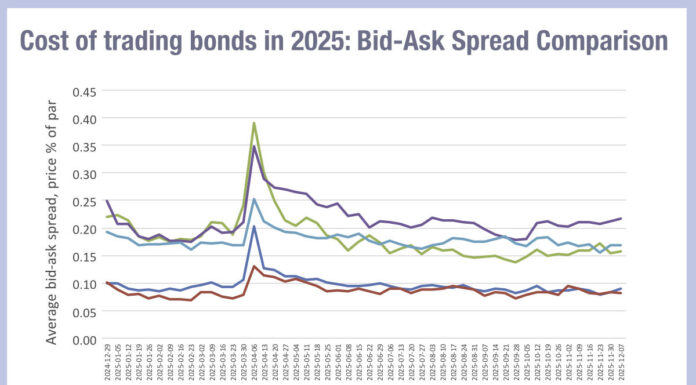The European Securities and Markets Authority has said that a recent problem in reporting bond market data via an approved publication arrangement (APA) does not endanger the APA’s users with being non-compliant.
The quality issues are reportedly only affecting the Financial Instruments Transparency System (FITRS) which handles quarterly liquidity reporting, not post-trade regulatory reporting on behalf of user firms. From 1 May 2018, the FITRS provided quarterly liquidity assessment for bonds.
A spokesperson for the European Union regulatory authority said, “ESMA understands that there might be concerns of investment firms in relation to the post-trade transparency reports published by the APA. To our knowledge, the issue relates only the reporting of data to FITRS, consequently, the post-trade transparency reports are not affected.”
The November results of the quarterly assessment of bond liquidity and the systematic internaliser (SI) regime data for bonds were suspended “due to data quality issues with an APA” according to ESMA. It reports it is following up to ensure a prompt resolution of the issue ahead of the next publication in February 2023.
In addition to FITRS, ESMA operates another database, the Financial Instruments Reference Data System (FIRDS), which records instruments reported by EU trading venues as being traded on trading venue (ToTV), the output of which helps firms to determine their own reporting obligations.
An issue with FIRDS, or more widely regarding market data, could have had a more direct impact on APA users.
One market participant noted that longstanding issues exists in reporting for bond markets via APAs, due to a lack of common understanding around the denomination of an individual bond trade. Institutional traders typically look at the notional value of a trade.
When asked to report the ‘quantity’ of a trade the numbers will vary. A trade of £100 million notional might be reported as having a quantity of 100 million if the denomination is seen as ‘1’, while its quantity would be reported as 100,000 if the denomination was expected to be 1000. Other firms report the number of transactions that correspond to that record – for example a sale of £100 million notional broken up across 30 counterparties might be reported as ’30’.
The current reporting regime is seen by some as overly engineered and proposals to simplify reporting across instruments are in motion.
In the meantime, it is still not apparent which APA had the data quality issue, even to the APAs themselves. Several have reported that they have not been contacted by ESMA, but this does not preclude that contact may be made in the future.
©Markets Media Europe 2025













